omg Nintendo it's time to stop postingSilentEcho wrote:pokemon x and y omg
Off-Topic Topic
Moderator: Kenya
-
Skeer-Ah
- Baby Gecko
- Posts: 1188
- Joined: Wed Dec 15, 2010 6:19 am
- Location: nope nope can't do that *logic*
- Contact:
Re: Off-Topic Topic

how to read sad megatron/starscream fic:
1. read & finish
2. tHEN SIT IN CORNER AND CRY WHILE YOU QUESTION EVERYTHING YOU'VE DONE IN YOUR LIFE
3. sleep
-
Foxesrule
- Cardinal Chick
- Posts: 2239
- Joined: Sat Mar 31, 2012 12:41 pm
- Location: Slaying dragons in Skyrim.
Re: Off-Topic Topic
Must come out now. ;o;SilentEcho wrote:pokemon x and y omg
Nah, I have to wait until Halloween. ._.
Your neighbourhood moderator.
Feel free to PM me if you have any questions or just want to chat. c:

what am i doing with my life..?
Feel free to PM me if you have any questions or just want to chat. c:

what am i doing with my life..?
-
animalguy888
- Adult Gecko
- Posts: 1546
- Joined: Thu Apr 07, 2011 10:42 am
- Location: In the sky hunting for a hybrid between superman and bigfoot in an alternate universe
- Contact:
Re: Off-Topic Topic
Here is some Interesting stuff.
A nearby planetary system?
The five planets remain candidates at this point and will not become official discoveries until they're confirmed by further analysis or observations. And that's not a sure thing, researchers said.
"
All articles were found here http://www.space.com/search-for-life/
A sun-like star in our solar system's backyard may host five planets, including one perhaps capable of supporting life as we know it, a new study reports.
Astronomers have detected five possible alien planets circling the star Tau Ceti, which is less than 12 light-years from Earth — a mere stone's throw in the cosmic scheme of things. One of the newfound worlds appears to orbit in Tau Ceti's habitable zone, a range of distances from a star where liquid water can exist on a planet's surface.
With a minimum mass just 4.3 times that of Earth, this potential planet would be the smallest yet found in the habitable zone of a sun-like star if it's confirmed, researchers said. "This discovery is in keeping with our emerging view that virtually every star has planets, and that the galaxy must have many such potentially habitable Earth-sized planets," study co-author Steve Vogt, of the University of California, Santa Cruz, said in a statement. "They are everywhere, even right next door."
The five planet candidates are all relatively small, with minimum masses ranging from 2 to 6.6 times that of Earth. The possibly habitable world, which completes one lap around Tau Ceti every 168 days, is unlikely to be a rocky planet like Earth, researchers said.
"It is impossible to tell the composition, but I do not consider this particular planet to be very likely to have a rocky surface," lead author Mikko Tuomi, of the University of Hertfordshire in England, told SPACE.com via email. "It might be a 'water world,' but at the moment it's anybody's guess."
Spotting signals in the noise
Tau Ceti is slightly smaller and less luminous than our sun. It lies 11.9 light-years away in the constellation Cetus (the Whale) and is visible with the naked eye in the night sky. Because of its proximity and sun-like nature, Tau Ceti has featured prominently in science fiction over the years.
Astronomers have searched for exoplanets around Tau Ceti before and turned up nothing. But in the new study, researchers were able to pull five possible planetary signals out from under a mountain of noise.
Tuomi and his team re-analyzed 6,000 observations of Tau Ceti made by three different spectrographs, instruments that allow researchers to detect the tiny gravitational wobbles orbiting planets induce in their parent stars.
The three instruments are the High Accuracy Radial velocity Planet Searcher (HARPS), on the European Southern Observatory's 3.6-meter telescope in La Silla, Chile; the University College London Echelle Spectrograph (UCLES) on the Anglo-Australian Telescope in Siding Spring, Australia; and the High Resolution Echelle Spectrometer, or HIRES, on the 10-meter Keck telescope atop Mauna Kea in Hawaii.
Using new analysis and modeling techniques, the team spotted the five faint signals, successfully separating them from noise caused by stellar activity and other factors.
"We pioneered new data modeling techniques by adding artificial signals to the data and testing our recovery of the signals with a variety of different approaches," Tuomi said in statement. "This significantly improved our noise modeling techniques and increased our ability to find low-mass planets."
The new analysis methods should aid the search for small planets, allowing more and more of them to be spotted throughout the galaxy, researchers said.
A nearby planetary system?
The five planets remain candidates at this point and will not become official discoveries until they're confirmed by further analysis or observations. And that's not a sure thing, researchers said.
"
I am very confident that the three shortest periodicities are really there, but I cannot be that sure whether they are of planetary origin or some artifacts of insufficient noise modelling or stellar activity and/or magnetic cycles at this stage," Tuomi said, referring to the potential planets with orbital periods of 14, 35 and 94 days (compared to 168 days for the habitable zone candidate and 640 days for the most distantly orbiting world).
"The situation is even worse for the possible habitable zone candidate, because the very existence of that signal is uncertain, yet according to our detection criteria the signal is there and we cannot rule out the possibility that it indeed is of planetary origin," he added. "But we don't know what else it could be, either."
If the Tau Ceti planets do indeed exist, their proximity would make them prime targets for future instruments to study, researchers said.
"Tau Ceti is one of our nearest cosmic neighbors and so bright that we may be able to study the atmospheres of these planets in the not-too-distant future," James Jenkins, of the Universidad de Chile and the University of Hertfordshire, said in a statement. "Planetary systems found around nearby stars close to our sun indicate that these systems are common in our Milky Way galaxy."
If confirmed, the Tau Ceti planets would not be the closest exoplanets to Earth. That title still goes to Alpha Centauri Bb, a roasting-hot, rocky world recently spotted just 4.3 light-years away, in the closest star system to our own.
The new study has been accepted for publication in the journal Astronomy & Astrophysics
As of December 2012, the Habitable Exoplanets Catalog lists nine planets that have the best chance for life beyond our solar system. Not all of these planets are confirmed, and there's still a lot to learn about their environments. But the catalog gives astrobiologists a great place to start when talking about life beyond Earth.
Here, according to the University of Puerto Rico at Arecibo, are the nine planets we know of that are most likely to host alien life.
Gliese 581g
This planet is a controversial find. It was discovered in 2010, but there has been difficulty in getting it confirmed. Still, the University of Puerto Rico at Arecibo calls Gliese 581 the top candidate for alien life. If confirmed, this rocky world is about 20 light-years away from Earth's sun, and is two to three times as massive as Earth. It orbits its parent star, Gliese 581, about every 30 days in the constellation Libra.
Gliese 667Cc
Another "super-Earth", Gliese 667Cc is also close by Earth: about 22 light-years away in the constellation Scorpius. The planet is at least 4.5 times bigger than Earth, and takes 28 days to make an orbit around its parent star. GJ 667C – the parent star – is actually part of a triple-star system. The star is an M-class dwarf star that is about a third of the mass of Earth's sun.
Kepler-22b
While Kepler-22b is bigger than Earth, it circles a star that is quite close in size and temperature to Earth's sun. Kepler-22b is 2.4 times Earth's size and, assuming its greenhouse effect is similar to Earth's, has an estimated surface temperature of 72 degrees Fahrenheit (22 degrees Celsius.) Its star system is about 600 light-years away from Earth's sun, in the constellation Cygnus.
HD 40307g
"Super-Earth" HD 40307g orbits comfortably inside the habitable zone of its parent star. It lies about 42 light-years away from Earth in the constellation Pictor. It is so close by that future telescopes may be able to peer at its surface. It orbits its parent star about 56 million miles (90 million kilometers) away, which is just over half of the Earth-sun distance of 93 million miles (150 million kilometers.)
HD 85512b
HD 85512b was announced in 2011 as part of a treasure trove of 50 planets discovered by the High Accuracy Radial velocity Planet Searcher instrument, or HARPS, in Chile. This planet is about 3.6 times more massive than Earth. It lives about 35 light-years away from Earth's sun, in the constellation Vela (the Sail). Researchers are hoping to one day figure out if there is water on its surface.
Tau Ceti e
The planet candidate Tau Ceti e, which was detected in December 2012, is found just 11.9 light-years from Earth. This world is a "super-Earth" at least 4.3 times as massive as Earth. Depending on its atmosphere, Tau Ceti e could be a mildly hot planet suitable for simple life, or a scorching world like Venus.
Gliese 163c
The mass of Gliese 163c puts the planet in a gray zone. The planet is seven times the mass of Earth, which could make it a very large rocky planet or a dwarf gas giant. Gliese 163c whirls around its dim planet star every 26 days, at a distance of 50 light-years away from Earth. Its parent star is in the constellation Dorado.
The Milky Way hosts at least 17 billion Earth-size alien planets, and probably many more, a new study reveals.
Astronomers have determined that about 17 percent of stars in our galaxy harbor a roughly Earth-size exoplanet in a close orbit. Since there are 100 billion or so stars in the Milky Way, that works out to a minimum of 17 billion small, rocky alien worlds, or an Earth-size planet around one of every six stars.
And there are probably many more such planets orbiting at greater distances from their stars, some of which may even be "alien Earths" capable of supporting life as we know it.
"These kind of rocky objects are everywhere," team member Francois Fressin, of the Harvard-Smithsonian Center for Astrophysics (CfA), told reporters today (Jan. 7) during a meeting of the American Astronomical Society in Long Beach, Calif.
Crunching the numbers
The research team conducted an analysis of data collected by NASA's planet-hunting Kepler Space Telescope.
Kepler detects alien worlds by noting the telltale dips in brightness caused when planets cross the face of — or transit — their parent stars from the instrument's perspective. The telescope, which launched in March 2009, flagged more than 2,700 potential planets in its first 22 months of operation, more than 100 of which have been confirmed to date.
The research team wanted to know how complete and accurate Kepler's survey has been — that is, what percentage of its finds are real, and how many planets is it likely missing? So they came up with a simulation that mimicked the telescope's work, finding that about 90 percent of its detections are probably the real deal.
"There is a list of astrophysical configurations that can mimic planet signals, but altogether, they can only account for one-tenth of the huge number of Kepler candidates," Fressin said in a statement. "All the other signals are bona-fide planets."
The study has been accepted for publication in The Astrophysical Journal.
Planets, planets everywhereUsing information from both the actual and simulated Kepler surveys, the team calculated some estimates about how common different types of planets are thoughout the Milky Way.
They determined, for example, that 17 percent of stars have a planet 0.8 to 1.25 times the size of Earth in tight orbits, with periods of 85 days or less. About 25 percent of stars have a so-called "super-Earth" (worlds 1.25 to 2 times as big as our own) in an orbit of 150 days or less — the same percentage that hosts a "mini-Neptune" (a planet 2 to 4 times Earth's size) with an orbital period up to 250 days.
Big planets such as Saturn or Jupiter are far less common. Only 5 percent of stars harbor a gas giant with an orbital period of 400 days or less, researchers said.
Overall, the team found that about 50 percent of all stars in the Milky Way have a planet the size of Earth or larger in a tight orbit. Extrapolation and incorporation of data from other instruments suggest that virtually all sun-like stars host planets, Fressin said.
Further, stars don't have to be sun-like to host an Earth-size world. The team also determined that small and medium-size exoplanets are commonly found around red dwarfs as well, which are smaller and cooler than our star.
"Earths and super-Earths aren’t picky," said co-author Guillermo Torres, also of the CfA. "We’re finding them in all kinds of neighborhoods."
Kepler generally requires three planetary transits to flag a potential alien world. Since more tightly orbiting planets transit more frequently, the telescope's early findings have been biased toward close-in worlds. But as Kepler continues to operate, it should find more and more planets farther from their host stars — including, perhaps, Earth-size worlds in Earthlike orbits.
Also Willl we actually make the biggest dicovey in history by finding a nearby alien world and possibly answer the age old question "are we alone" this year?
The first truly Earth-like alien planet is likely to be spotted next year, an epic discovery that would cause humanity to reassess its place in the universe.
While astronomers have found a number of exoplanets over the last few years that share one or two key traits with our own world — such as size or inferred surface temperature — they have yet to bag a bona fide "alien Earth." But that should change in 2013, scientists say.
"I'm very positive that the first Earth twin will be discovered next year," said Abel Mendez, who runs the Planetary Habitability Laboratory at the University of Puerto Rico at Arecibo.
Astronomers discovered the first exoplanet orbiting a sunlike star in 1995. Since then, they've spotted more than 800 worlds beyond our own solar system, and many more candidates await confirmation by follow-up observations.
NASA's prolific Kepler Space Telescope, for example, has flagged more than 2,300 potential planets since its March 2009 launch. Only 100 or so have been confirmed to date, but mission scientists estimate that at least 80 percent will end up being the real deal.
The first exoplanet finds were scorching-hot Jupiter-like worlds that orbit close to their parent stars, because they were the easiest to detect. But over time, new instruments came online and planet hunters honed their techniques, enabling the discovery of smaller and more distantly orbiting planets — places more like Earth.
Last December, for instance, Kepler found a planet 2.4 times larger than Earth orbiting in its star's habitable zone — that just-right range of distances where liquid water, and perhaps life as we know it, can exist.
The Kepler team and other research groups have detected several other worlds like that one (which is known as Kepler-22b), bringing the current tally of potentially habitable exoplanets to nine by Mendez' reckoning.
None of the worlds in Mendez' Habitable Exoplanets Catalog are small enough to be true Earth twins. The handful of Earth-size planets spotted to date all orbit too close to their stars to be suitable for life.
But it's only a matter of time before a small, rocky planet is spotted in the habitable zone — and Mendez isn't the only researcher who thinks that time is coming soon.
"The first planet with a measured size, orbit and incident stellar flux that is suitable for life is likely to be announced in 2013," said Geoff Marcy, a veteran planet hunter at the University of California, Berkeley, and a member of the Kepler team.
Mendez and Marcy both think this watershed find will be made by Kepler, which spots planets by flagging the telltale brightness dips caused when they pass in front of their parent stars from the instrument's perspective.
Kepler needs to witness three of these"transits" to detect a planet, so its early discoveries were tilted toward close-orbiting worlds (which transit more frequently). But over time, the telescope has been spotting more and more distantly orbiting planets — including some in the habitable zone.
An instrument called HARPS (short for High Accuracy Radial velocity Planet Searcher) is also a top contender, having already spotted a number of potentially habitable worlds. HARPS, which sits on the European Southern Observatory's 3.6-meter telescope in Chile, allows researchers to detect the tiny gravitational wobbles that orbiting planets induce in their parent stars.
"HARPS should be able to find the most interesting and closer Earth twins," Mendez told SPACE.com via email, noting that many Kepler planets are too far away to characterize in detail. "A combination of its sensitivity and long-term observations is now paying off."
And there are probably many alien Earths out there to be found in our Milky Way galaxy, researchers say.
"Estimating carefully, there are 200 billion stars that host at least 50 billion planets, if not more," Mikko Tuomi, of the University of Hertfordshire in England, told SPACE.com via email.
"Assuming that 1:10,000 are similar to the Earth would give us 5,000,000 such planets," added Tuomi, who led teams reporting the discovery of several potentially habitable planet candidates this year, including an exoplanet orbiting the star Tau Ceti just 11.9 light-years from Earth. "So I would say we are talking about at least thousands of such planets."
it would mean
Whenever the first Earth twin is confirmed, the discovery will likely have a profound effect on humanity.
"We humans will look up into the night sky, much as we gaze across a large ocean," Marcy told SPACE.com via email. "We will know that the cosmic ocean contains islands and continents by the billions, able to support both primitive life and entire civilizations."
Marcy hopes such a find will prod our species to take its first real steps beyond its native solar system.
"Humanity will close its collective eyes, and set sail for Alpha Centauri," Marcy said, referring to the closest star system to our own, where an Earth-size planet was discovered earlier this year.
"The small steps for humanity will be a giant leap for our species. Sending robotic probes to the nearest stars will constitute the greatest adventure we Homo sapiens have ever attempted," Marcy added. "This massive undertaking will require the cooperation and contribution from all major nations around world. In so doing, we will take our first tentative steps into the cosmic ocean and enhance our shared sense of purpose on this terrestrial shore."
All articles were found here http://www.space.com/search-for-life/
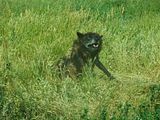
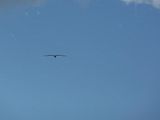
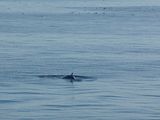
"There is beauty in every Creature, Stone, and Plant. To find it you Just have to look for It."
Click here if you dare!...

- hoopyscoop
- Adult Gecko
- Posts: 1649
- Joined: Sat Nov 05, 2011 2:12 pm
- Location: Probably with Holmes and Watson.
Re: Off-Topic Topic
October?! But.. But... D: I want it.. nooow. Fennekin looks soo cute!Foxesrule wrote:Must come out now. ;o;SilentEcho wrote:pokemon x and y omg
Nah, I have to wait until Halloween. ._.
Icon = Fluttershy = not mine.
-
Foxesrule
- Cardinal Chick
- Posts: 2239
- Joined: Sat Mar 31, 2012 12:41 pm
- Location: Slaying dragons in Skyrim.
Re: Off-Topic Topic
Yeah! <33333333333333hoopyscoop wrote:October?! But.. But... D: I want it.. nooow. Fennekin looks soo cute!Foxesrule wrote:Must come out now. ;o;SilentEcho wrote:pokemon x and y omg
Nah, I have to wait until Halloween. ._.
When I saw fennkin I was like:
UHMAGADUHMAGADUHMAGAD
NUIRGUIGHRSRKM ITS A FENNEC FOX ITS A FENNEC FOXXXXXXXXX!!!!!!
NGJGHKHFGNIUGJKTRHTRKNLHH
POKEMON HEARD MY REQUESTS THAT I DID NOT SAY AT LAST! URN56U
Your neighbourhood moderator.
Feel free to PM me if you have any questions or just want to chat. c:

what am i doing with my life..?
Feel free to PM me if you have any questions or just want to chat. c:

what am i doing with my life..?
-
animalguy888
- Adult Gecko
- Posts: 1546
- Joined: Thu Apr 07, 2011 10:42 am
- Location: In the sky hunting for a hybrid between superman and bigfoot in an alternate universe
- Contact:
Re: Off-Topic Topic
Im not not sure if im up for it... I mean pokemon has changed.... in the worst kind of way too. I tried watching the new show and compare it the original I grew up with. It made me mad... for mainly 5 reasons.hoopyscoop wrote:October?! But.. But... D: I want it.. nooow. Fennekin looks soo cute!Foxesrule wrote:Must come out now. ;o;SilentEcho wrote:pokemon x and y omg
Nah, I have to wait until Halloween. ._.
1. The took away the classic team rocket that made all the children and other people that watched it laugh their butts off.
2.They completly took away brock another one of the main sources of comedy in the show.
3. Ash is still 10.
4.the pokemon they have been coming up with are not as good as the old ones and there are too many of them. My friend and I had a discusion once about when we are 80+ years old and have grandchildren they will be watching a completely changed pokemon series which include all 1 million+ pokemon. Then will sit there and say things like "When I was a boy there were only 150 pokemon and it was a really good show back then too."
5. Ash becomes just plain dumb.
As for the games I think ill stick with the older versions like emerald, ruby, firered, and leafgreen for GBA, and Yellow and Gold for GBC.
Their are some exceptions in my list. Such as some if not most of the spinoff games such as Pokemon Myster Daongeon series from Red rescue team and Blue rescue team to Explorers of TIme and Darkness. The Pokemon Conquest spinoff that was released last summer is amazing though. I enjoy the soundtrack and really love the plot. Also it includes some of my favorite pokemon from the good o'l days such as trecko, evee, jigglypuff, pichu, and raquaza. Best of all the storyline includes a shiny raquaza! Or as a character calls it "Raquaza Black as Night"
Am I a ready for pokemon x and y? Im not sure... I guess I'll have to see when it comes out



"There is beauty in every Creature, Stone, and Plant. To find it you Just have to look for It."
Click here if you dare!...

-
Foxesrule
- Cardinal Chick
- Posts: 2239
- Joined: Sat Mar 31, 2012 12:41 pm
- Location: Slaying dragons in Skyrim.
Re: Off-Topic Topic
I ordered Pokemon Conquest yesterday. <3
Anyway, I must admit, some pokemon now are really...Well, not good.
Apart from Braviary, I prefer the old pokemon. (<3333333333333 I love Braviary!)
But some pokemon in X and Y really kinda seem weird.
A penguin with a top hat? Ok, it'd be cool if it had a Monocle and a Moustache but..
You get what I mean. xp
Anyway, I must admit, some pokemon now are really...Well, not good.
Apart from Braviary, I prefer the old pokemon. (<3333333333333 I love Braviary!)
But some pokemon in X and Y really kinda seem weird.
A penguin with a top hat? Ok, it'd be cool if it had a Monocle and a Moustache but..
You get what I mean. xp
Your neighbourhood moderator.
Feel free to PM me if you have any questions or just want to chat. c:

what am i doing with my life..?
Feel free to PM me if you have any questions or just want to chat. c:

what am i doing with my life..?
- SilentEcho
- Hawk Chick
- Posts: 4081
- Joined: Thu Mar 25, 2010 2:48 am
- Location: Australia
- Contact:
Re: Off-Topic Topic
@everybody talking about pokemon getting bad.
what are you talking about? the new pokemon look great, they were designed by the same people who made the gen.1 pokemon .
( freaking out over xerneas *drools over deer legendary*)
(i guess everybody's entitled to their own opinions but it's good to keep an open mind isn't it?)
And you're just blinded by nostalgia if you think the first season of pokemon was good, TRUST ME it wasn't.
There are great children's programs (MLP:FIM, Adventure time, gravity falls etc.) but pokemon is not one of them. It reminds me of the early my little pony tv shows; SUPER childish and really, really dull to anybody who isn't obsessed with pokemon/8 years old. (btw the pokemon anime still sucks)
Ash can't grow older! You know that pokemon is aimed at young children right? I don't think a little kid can relate to an older person. Kids want to be able to relate to Ash, and having him any older would make that difficult. (btw when have characters ever grown in cartoons? The simpsons haven't grown older, niether has spongebob and both of those shows have been running for much longer than pokemon.
and team rocket is still in the tv show (the games are set in different countries, not all criminal organizations are spread accross the entire world)
Gen 5 introduced SO many new things, gameplay wise and graphics wise. All of the pokemon games play the same (as in, you do the exact same thing no matter what game you play) so saying the older games were better is silly.
WHAT I WANT FROM POKEMON is a new story line, i'm so sick of doing basically the same thing everytime, always having a boring rival who wants nothing more than to defeat you. I would love it so much.
(i don't want a new battle system tho, that would break my heart because i've spent so much time trying to get good at competitive battling)
what are you talking about? the new pokemon look great, they were designed by the same people who made the gen.1 pokemon .
( freaking out over xerneas *drools over deer legendary*)
(i guess everybody's entitled to their own opinions but it's good to keep an open mind isn't it?)
And you're just blinded by nostalgia if you think the first season of pokemon was good, TRUST ME it wasn't.
There are great children's programs (MLP:FIM, Adventure time, gravity falls etc.) but pokemon is not one of them. It reminds me of the early my little pony tv shows; SUPER childish and really, really dull to anybody who isn't obsessed with pokemon/8 years old. (btw the pokemon anime still sucks)
Ash can't grow older! You know that pokemon is aimed at young children right? I don't think a little kid can relate to an older person. Kids want to be able to relate to Ash, and having him any older would make that difficult. (btw when have characters ever grown in cartoons? The simpsons haven't grown older, niether has spongebob and both of those shows have been running for much longer than pokemon.
and team rocket is still in the tv show (the games are set in different countries, not all criminal organizations are spread accross the entire world)
Gen 5 introduced SO many new things, gameplay wise and graphics wise. All of the pokemon games play the same (as in, you do the exact same thing no matter what game you play) so saying the older games were better is silly.
WHAT I WANT FROM POKEMON is a new story line, i'm so sick of doing basically the same thing everytime, always having a boring rival who wants nothing more than to defeat you. I would love it so much.
(i don't want a new battle system tho, that would break my heart because i've spent so much time trying to get good at competitive battling)
-
NatureHeart
- Cardinal Chick
- Posts: 2346
- Joined: Fri Dec 16, 2011 3:10 pm
- Location: Probably in my room. ;3
Re: Off-Topic Topic
I want to point out from that the part about characters growing. I have seen only a few and honestly I can't remeber but any but one. Beyblades. The kids grow up and new characters are set in their place. So yeah. In like one show. x3
☼ Cheer up! ☼
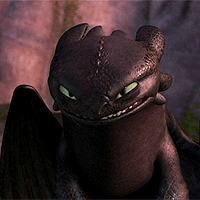
☺ Be silly! ☺
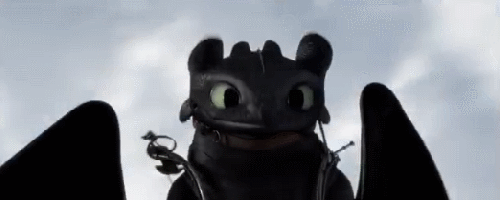
♥ And fly! ♥


☺ Be silly! ☺

♥ And fly! ♥

-
Foxesrule
- Cardinal Chick
- Posts: 2239
- Joined: Sat Mar 31, 2012 12:41 pm
- Location: Slaying dragons in Skyrim.
Re: Off-Topic Topic
I love the deer legendary pokemon too. <3
Anyway, yes, the pokemon anime has never been that good, I admit it, soo.. XD
But yeah, the grahpcis are waaaaaay better.
Anyway, yes, the pokemon anime has never been that good, I admit it, soo.. XD
But yeah, the grahpcis are waaaaaay better.
Your neighbourhood moderator.
Feel free to PM me if you have any questions or just want to chat. c:

what am i doing with my life..?
Feel free to PM me if you have any questions or just want to chat. c:

what am i doing with my life..?
-
Skeer-Ah
- Baby Gecko
- Posts: 1188
- Joined: Wed Dec 15, 2010 6:19 am
- Location: nope nope can't do that *logic*
- Contact:
Re: Off-Topic Topic
ok subject change
you know what i hate. when i cant even
its like ok awesome sketch time to ink but i cant just.
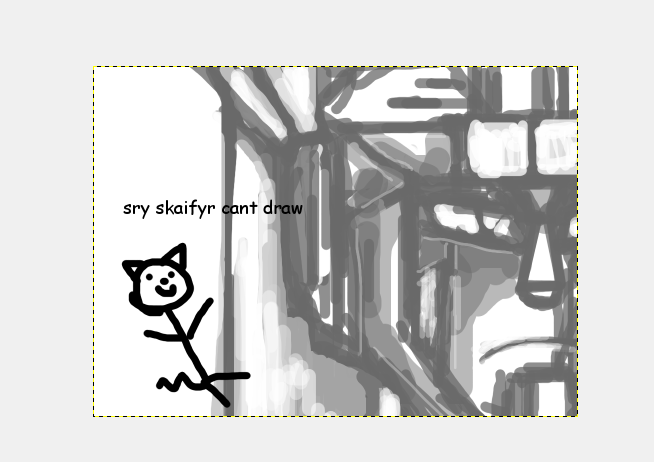
help
o it was my birthday yesterday cake please
you know what i hate. when i cant even
its like ok awesome sketch time to ink but i cant just.

help
o it was my birthday yesterday cake please

how to read sad megatron/starscream fic:
1. read & finish
2. tHEN SIT IN CORNER AND CRY WHILE YOU QUESTION EVERYTHING YOU'VE DONE IN YOUR LIFE
3. sleep
-
animalguy888
- Adult Gecko
- Posts: 1546
- Joined: Thu Apr 07, 2011 10:42 am
- Location: In the sky hunting for a hybrid between superman and bigfoot in an alternate universe
- Contact:
Re: Off-Topic Topic
Guess What! I just got a chance to hear a really rare bird. I took the bus home from school today as always. I still have to walk from my bus stop to my house though. I got to my house and reached for the door handle when I was stoped by an odd bird call. One I have never heard before. Once inside I decided to look it up and try to identify it. I found an exact match of the sound I heard. It is a hawk that is not all that common here In Washington state.
It was a Sharp-shinned Hawk.
In January they are listed as uncommon throughout washington state. With exception of an area called the blue mountains were it is listed as Rare.
It was a Sharp-shinned Hawk.
General Description
The Sharp-shinned Hawk is the smallest of the three North American accipiters. The female is larger than the male. Adults have solid gray upperparts and barred, reddish-brown underparts. Their long, square tails have gray and black bars with very narrow, white tips. Their eyes are red. Immature birds are brown above with diffuse brown streaking below; they have yellow eyes. Sharp-shinned Hawks have short, rounded wings that are set slightly more forward on their bodies than those of the larger, but similar-looking, Cooper's Hawk. Their heads are also relatively smaller and their gray caps less distinct than the Cooper's. The white tip of the tail of the Cooper's Hawk is usually wider than that of Sharp-shinned Hawk, especially in the fall. All of these differences are subtle, making it quite difficult to distinguish a male Cooper's Hawk from a female Sharp-shinned Hawk.
Habitat
Sharp-shinned Hawks inhabit coniferous or mixed woodlands, avoiding open country. While Cooper's Hawks appear to prefer deciduous forests, Sharp-shinned Hawks appear to prefer coniferous forests. During winter, they are often found in woodlots, towns, and parks.
Conservation Status
Sharp-shinned Hawk numbers dropped in the mid-20th Century as a result of eggshell thinning due to DDT. They were also easy, convenient targets at hawk migration points. The banning of DDT and changing attitudes towards predators have enabled the Sharp-shinned Hawk to recover well, although new declines have been discovered in some areas in the past few decades. These declines may be due to a variety of factors, including environmental contaminants, reduced prey supply, and habitat changes. In Washington, Sharp-shinned Hawks are poorly sampled, as they are hard to find during the breeding season. Christmas Bird Count data reflect a slight increase in Washington, but sample sizes are small, and this may or many not reflect a true increase.
In January they are listed as uncommon throughout washington state. With exception of an area called the blue mountains were it is listed as Rare.



"There is beauty in every Creature, Stone, and Plant. To find it you Just have to look for It."
Click here if you dare!...

-
NatureHeart
- Cardinal Chick
- Posts: 2346
- Joined: Fri Dec 16, 2011 3:10 pm
- Location: Probably in my room. ;3
Re: Off-Topic Topic
Cool! Back in North Carolina while I was taking a walk on the beach under the stars, I saw a leatherback sea turtle laying eggs! It was amazing!
☼ Cheer up! ☼

☺ Be silly! ☺

♥ And fly! ♥


☺ Be silly! ☺

♥ And fly! ♥

-
MidnightRose
- Cardinal Chick
- Posts: 2058
- Joined: Mon Jul 11, 2011 10:57 pm
- Contact:
Re: Off-Topic Topic
Yesterday was my birthday... I drank something i haven't had in a long time and it got me sick all night D=
Oh well, it was a fun birthday <3
Oh well, it was a fun birthday <3
In-game name: Midnightsky
Twitter
-
NatureHeart
- Cardinal Chick
- Posts: 2346
- Joined: Fri Dec 16, 2011 3:10 pm
- Location: Probably in my room. ;3
Re: Off-Topic Topic
Happy late birthday Mid! Sorry you got sick though. What did you drink that made you so sick?
☼ Cheer up! ☼

☺ Be silly! ☺

♥ And fly! ♥


☺ Be silly! ☺

♥ And fly! ♥


